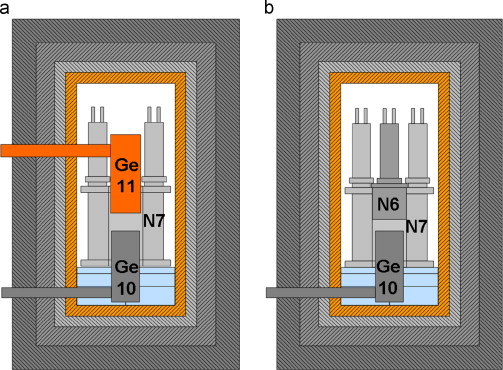Applied Radiation and Isotopes 81 (2013) 81–86
Guillaume Lutter a), Mikael Hult a), Gerd Marissens a), Erica Andreotti a), Ulf Rosengård a), Marcin Misiaszek b), Ayhan Yüksela c) & Namik Sahina d)
a) European Commission, DG JRC, Institute for Reference Materials and Measurements (IRMM), Retieseweg 111, 2440 Geel, Belgium
b) Smoluchowski Institute of Physics, Jagiellonian University, ul. Reymonta 4, PL-30-059 Krakow, Poland
c) TAEK-CNAEM, Turkish Atomic Energy Authority, Istanbul, Turkey
d) TAEK-SANAEM, Turkish Atomic Energy Authority, Ankara,Turkey
Download
http://dx.doi.org/10.1016/j.apradiso.2013.03.079
Abstract
The newest development in IRMM’s underground analytical facility is a large lead shield lined with copper that is versatile and can host several detectors of different types. The characteristics and the background performance of the shield are described for four different detector configurations involving HPGe-detectors and NaI-detectors. The shield has been designed to swap detectors, while still maintaining a low background. This enables testing of detectors for other experiments and optimisation of detection limits for specific radionuclides in different projects.
